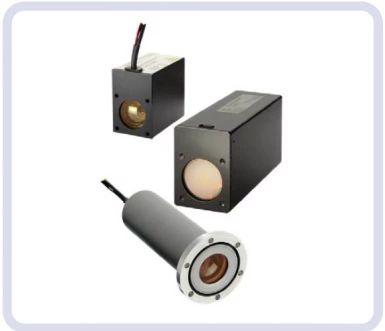Description
The PDM USB series photodetector module is a cutting-edge solution designed for precision and versatility in photon detection. Available in both cylindrical and rectangular formats, these modules offer a choice between 25mm and 30mm diameter photomultiplier tubes (PMTs). This flexibility allows users to tailor the module to their specific requirements, ensuring optimal performance in various applications.
One of the standout features of the PDM USB series is its advanced dynamic range capabilities. The module incorporates dead time correction to address non-linearity at high count rates, a common issue in photon detection due to pulse pile-up. By applying the correction formula, N = n/(1-nT), where N is the true count rate, n is the measured count rate, and T is the count rate correction factor, users can achieve a deviation from linearity typically within +5% at 100 Mcps. This ensures accurate and reliable data even in high-intensity scenarios.
The PDM USB modules are equipped with user-friendly software, providing the ability to select operating voltage and set threshold levels as needed. The modules support three software-configurable counting modes: pre-set number of channels, pre-set total measurement period, or continuous operation. This versatility makes the PDM USB series suitable for a wide range of experimental setups. Additionally, the modules can be conveniently powered through the USB connector, eliminating the need for an external power supply and enhancing ease of use.
Designed with practicality in mind, these modules offer easy plug-and-play operation and feature magnetic and electrostatic shielding to protect against interference. Furthermore, the option for fibre coupling enhances the module's adaptability, allowing integration into complex optical setups. With low noise performance and multiple spectral range options, the PDM USB series photodetector modules are an excellent choice for researchers and engineers seeking reliable and flexible photon detection solutions.
Photodetector Module PDM04-9113-USB
Specifications
| PMT Type: | PMT (photomutiplier tube) |
|---|---|
| Wavelength Of Max Response: | 550 nm |
| Wavelength Range: | 280 – 850 nm |
| Rise Time: | 25 ns |
| Signal Count Rate Without Dead Time Correction: | 100M cps |
| Signal Count Rate With Dead Time Correction: | 30M cps |
| Discriminator Level: | 40 mV |
| Supply Voltage: | 5 V |
| Supply Current (@ 5V, No Signal): | 25 mA |
| Supply Current (@ 5V, Signal = 100Mcps): | 120 mA |
| Operating Voltage: | 6 V |
| Warm-up Time: | 5.5 s |
| Operating Temperature: | -40 to 55 °C |
| Storage Temperature: | -40 to 60 °C |
Features
- Easy Plug-and-Play Operation: Simplifies setup and use, allowing for quick integration into your system.
- Wide Dynamic Range: Capable of handling a broad range of input signal levels for versatile applications.
- No External Power Supply Required: Powered through the USB connector, eliminating the need for additional power sources.
- Magnetic and Electrostatic Shielding: Provides protection against external magnetic and electrostatic interference, ensuring accurate measurements.
- Spectral Range Options: Available in various spectral ranges to suit different application needs.
- Low Noise: Designed to minimize noise, ensuring high-quality signal detection.
- Fibre Coupling Possible: Option to attach a light fibre guide for enhanced flexibility in light collection (fibre not supplied).
- Software Configurable: Choose from three counting modes (pre-set number of channels, pre-set total measurement period, or continuous) and adjust operating voltage and threshold levels via software.
- Extended Dynamic Range with Dead Time Correction: Compensates for pulse pile-up at high count rates, maintaining linearity within +5% at 100 Mcps.
- Multiple Photomultiplier Options: Select from various models with different spectral ranges and active diameters to match specific application requirements.
Applications
- Photon Counting & Spectroscopy: Ideal for scientific research and laboratory measurements.
- Light Detection in Optical Systems: Suitable for integration into complex optical setups.
- Nuclear & Particle Physics Experiments: Precise detection of low light signals.
- Industrial Monitoring: Can be adapted for specialized sensing and quality control systems.
Frequently Asked Questions
What is the Photodetector Module PDM04-9113-USB?
What are the counting modes available with the Photodetector Module PDM04-9113-USB?
Can a light fibre guide be attached to the Photodetector Module PDM04-9113-USB?
What are the features of the Photodetector Module PDM04-9113-USB?
How can dead time correction be used with the Photodetector Module PDM04-9113-USB?
Similar Products
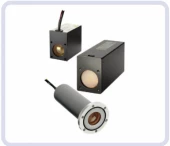
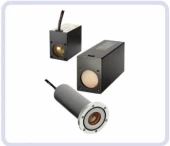
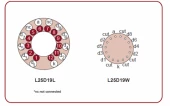
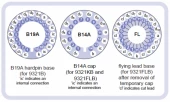
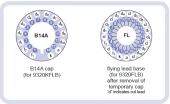
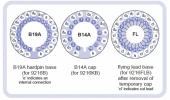






Your inquiry has been received.
Create an account by adding a password
Why create an account?
- Auto-complete inquiry forms
- View and manage all your past messages
- Save products to your favorites
- Close your account anytime — no hassle
